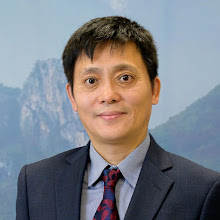BBC and some newspaper had a negative news about Chinese Medicine today.
Ying "Susan" Wu, 48, of Holland-on-Sea in Essex, has been on trial at the Old Bailey for selling pills containing aristolochic acid to a civil servant.
Patricia Booth, 58, took the pills, bought at Chelmsford's Chinese Herbal Medical Centre, for over five years. She was in her mid-40‘s when she first sought help from the centre in 1997 for stubborn patches of spots on her face.
Aristolochic acid (AA) is a component from some Chinese medicine herbs. It can cause kidney damage if applied improperly in the clinic.
 In Belgium, in the early 1990's many people had been diagnosed with kidney damage after taking a kind of Chinese herbal slimmimg tea for one year, which contained AA. In 1998, the UK had two case of kidney failure reported after taking herbs containing AA. Since then any herbs or patent herb products have been strictly forbidden by law in the entire world.
In Belgium, in the early 1990's many people had been diagnosed with kidney damage after taking a kind of Chinese herbal slimmimg tea for one year, which contained AA. In 1998, the UK had two case of kidney failure reported after taking herbs containing AA. Since then any herbs or patent herb products have been strictly forbidden by law in the entire world.Every qualified Chinese Medicine practitioner should have this knowledge and such an incident should be avoidable.
Some people might simply believe AA is just contained in Aristolochia debilis (Madouling), actually it also exists in many other herbs such as Manshurian Aristolochia Stem (Guanmutong), Aristolochia fangchi (Guangfangji), and Dutchmanspipe Vine (Tianxianteng) et al.
Some herbs only contain a trace amount of AA, and it can still be used safely especially when it was combined with other herbs. Only the herbs which the chief component is AA should be strictly banned.
Generally speaking Chinese herbal medicine is much safer compared to most chemical drugs, but it doesn’t mean it is a hundred percent safe. It still needs special training and obtaining a standard qualification before practice. Which herb can you choose? What is maximum dosage? How long can your patient take it? If a practitioner failed in answering these questions, he or she will be like a blind driver on the road.
As a TCM practitioner I think this case highlighted the urgent need for the statutory regulation of herbal medicine in the UK. The government needs to take action to speed up the process of statutory regulation of herbal medicine.
I would like to tell the media and the public that in the UK, most of the Chinese Medicine practitioners are qualified and most of the Chinese herbs are very safe. When you select Chinese Medicine treatment check your practitioner’s qualification first. Do not change your opinion about Chinese Medicine just because of one or two very rare incidents.



